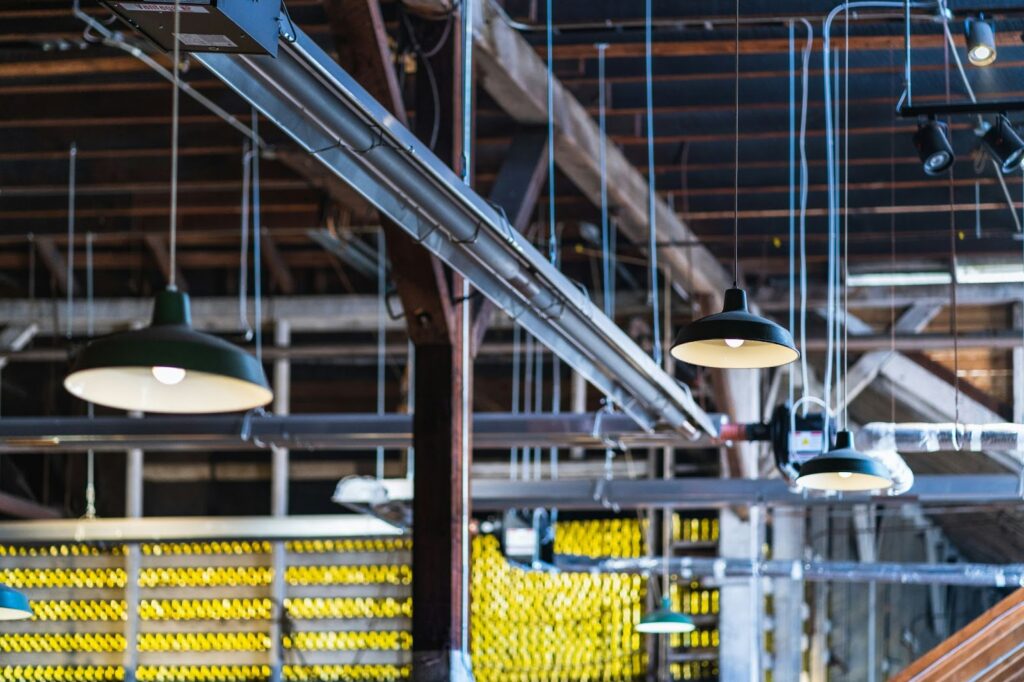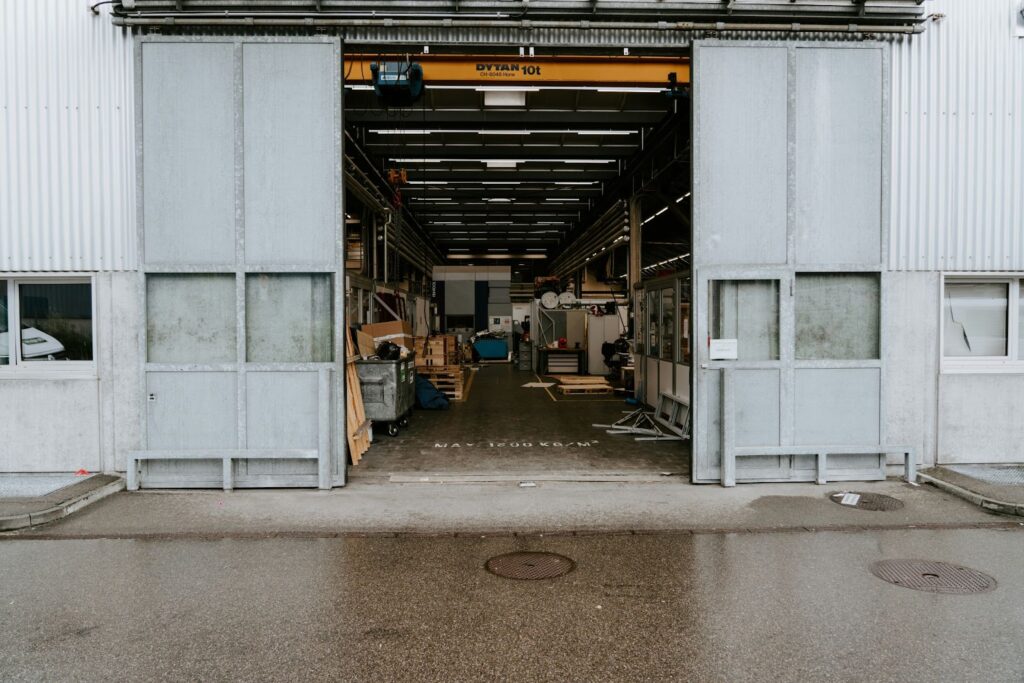Warehouse permits are essential for businesses operating in the warehousing industry. These permits not only ensure compliance with legal requirements but also promote safety in warehouse operations.
If you’re wondering how to obtain a warehouse permit, this article will guide you through the process, highlight the importance of permits, and provide helpful tips for maintaining compliance.
Table of Content:
- Understanding the Importance of Warehouse Permits
- Identifying the Type of Permit You Need
- The Process of Applying for a Warehouse Permit
- Dealing with Potential Roadblocks in the Permit Process
- Maintaining Your Warehouse Permit
- What’s Next?
- Frequently Asked Questions
Understanding the Importance of Warehouse Permits
Operating a warehouse without the necessary permits can have severe legal implications. It’s crucial to understand the consequences of noncompliance, as they can lead to hefty fines, penalties, or even the shutdown of your warehouse operations.
Warehouse permits play a vital role in ensuring that businesses comply with regulations set by local, state, and federal authorities. These permits are not just pieces of paper; they represent a commitment to upholding safety standards, environmental regulations, and proper handling of goods within the warehouse premises.
Check out our in-depth blog post on the types of warehouses:
Exploring Different Warehouse Types
Legal Implications of Operating Without a Permit
When a warehouse operates without a permit, it violates local, state, and federal regulations. These regulations exist to ensure the safety of workers, the surrounding community, and the proper handling of goods. By operating without a permit, you risk facing legal action and endangering the well-being of your employees.
Furthermore, operating without a permit can tarnish the reputation of your business. It may lead to distrust among customers, suppliers, and even potential investors who prioritize working with compliant and ethical businesses. This loss of trust can have long-lasting effects on your brand and may hinder future business opportunities.
Did You Know?
As of March 2024, the warehousing and storage subsector employed approximately 1,757,200 individuals. In 2023, the industry employed 286,230 industrial truck and tractor operators, 445,780 laborers and freight, stock, and material movers by hand, 72,420 shipping, receiving, and traffic clerks, and 451,860 stock clerks and order fillers.
Safety and Compliance Benefits of Having a Permit
On the other hand, obtaining warehouse permits comes with numerous benefits. Permits require warehouses to adhere to specific safety standards and regulations, leading to a safer work environment for employees. They also reinforce compliance with environmental regulations, ensuring proper waste disposal and preventing hazardous incidents.
Having a warehouse permit demonstrates your commitment to operating responsibly and ethically. It shows that your business values the well-being of its employees, the community, and the environment. Additionally, complying with permit regulations can open doors to partnerships with other businesses that prioritize working with socially responsible entities.
Identifying the Type of Permit You Need
The next step in obtaining a warehouse permit is identifying the specific type of permit your business requires. Several types of permits may be applicable, depending on the nature of your warehouse operations.
When delving into the realm of warehouse permits, it’s essential to understand the intricacies involved in the process. From ensuring compliance with safety regulations to meeting zoning requirements, each permit serves a distinct purpose in safeguarding your business and the community.
Different Types of Warehouse Permits
Some common types of warehouse permits include:
- Building permits: Required for new construction, renovations, or modifications to existing warehouse structures
- Occupancy permits: Certify that the warehouse complies with local building codes and is safe for occupancy
- Hazardous materials permits: Required if your warehouse handles, stores, or transports hazardous materials
Moreover, delving deeper into the realm of warehouse permits unveils myriad additional permit categories that may be pertinent to your specific operations. From fire safety permits to environmental impact assessments, each permit plays a crucial role in ensuring your warehouse’s smooth and lawful functioning.
Determining the Right Permit for Your Warehouse
Each warehouse is unique, and the permit requirements may vary based on factors such as location, industry, and storage capacities. It’s crucial to consult with local authorities or permit offices to determine the specific permits your warehouse needs. They will guide you through the process and provide the necessary information, ensuring you obtain the correct permits for your warehouse operations.
Embarking on the journey of permit acquisition for your warehouse is not merely a bureaucratic obligation but a strategic step toward fostering a safe and compliant working environment. By meticulously identifying and securing the requisite permits, you not only uphold legal standards but also bolster the reputation and longevity of your warehouse business.
The Process of Applying for a Warehouse Permit
Once you have identified the permits required for your warehouse, the next step is to initiate the application process. While the process may differ depending on your location, the following general steps will guide you along the way.
Preparing Your Application
Gather all the necessary documentation and information required for the permit application process. This may include architectural drawings, project plans, safety protocols, and environmental impact assessments. Ensure your application package is complete and addresses all the specific requirements outlined by the permit office.
When preparing your application, it is crucial to pay attention to detail and ensure that all documents are accurate and up-to-date. Architectural drawings should be precise, project plans should be comprehensive, safety protocols should meet industry standards, and environmental impact assessments should be thorough. Providing detailed and well-prepared documentation will not only expedite the review process but also demonstrate your commitment to compliance and safety.
Submitting Your Application
Submit your application to the appropriate permit office or local authorities responsible for permit approvals. Ensure you include all required documents and fees. Additionally, make sure to submit your application well in advance of any planned warehouse operations to prevent any unnecessary delays.
When submitting your application, consider reaching out to the permit office or authorities for guidance on the submission process. Some offices may have specific requirements for how applications should be formatted or delivered.
By seeking clarification upfront, you can avoid potential rejections or delays due to improper submission. It is also advisable to keep copies of all documents submitted and maintain open communication with the permit office throughout the review process.

Dealing with Potential Roadblocks in the Permit Process
The permit application process may sometimes encounter roadblocks or challenges. It’s essential to be aware of common issues and have strategies in place to overcome them.
One of the key factors that can lead to roadblocks in the permit process is the complexity of the project itself. Projects with intricate designs or significant environmental impacts may require more detailed documentation and thorough review, leading to potential delays. Understanding the specific requirements for your project and proactively addressing them can help streamline the permit application process.
Common Issues in the Permit Application Process
Some common challenges that can arise during the permit application process include:
- Missing or incomplete documentation
- Difficulty in understanding permit requirements
- Long processing times
- Issues with environmental impact assessments or zoning regulations
Another common issue that applicants face is the lack of clarity regarding permit requirements. Navigating through the intricate web of regulations and zoning laws can be daunting, especially for first-time applicants. Seeking guidance from experienced professionals or consultants who specialize in permit applications can provide valuable insights and ensure that your application meets all necessary criteria.
How to Overcome Application Challenges
To overcome these challenges:
- Double-check and ensure all documentation is complete and accurate before submitting your application.
- Seek assistance from professionals or consultants with expertise in the permit application process.
- Prepare in advance and allow ample time for the permit office to review your application.
- Address any environmental concerns or zoning issues proactively to avoid delays.
Pro Tip:
A warehouse isn’t always a clear zoning category. Projects might fall under industrial, commercial, or mixed-use zoning codes, making it hard to identify warehouses within broader datasets. It’s best to work with experienced professionals when deciding on zoning.
By taking a proactive approach, understanding the intricacies of the permit process, and seeking assistance when needed, you can easily navigate potential roadblocks and ensure a smoother permit application process.
Maintaining Your Warehouse Permit
Once you have successfully obtained your warehouse permit, it is crucial to maintain compliance with regulations to keep your operations running smoothly.
Ensuring the continued validity of your warehouse permit involves more than just the initial application process. It requires ongoing dedication to upholding the standards set forth by regulatory authorities.
By proactively addressing compliance issues and staying informed about any regulatory changes, you can safeguard your permit and the continuity of your warehouse operations.
Regular Inspections and Renewals
Permit authorities may conduct periodic inspections to ensure compliance with ongoing safety and environmental and operational standards. Stay proactive by conducting regular internal audits to identify any potential issues and address them promptly. Additionally, be aware of permit expiration dates and initiate the renewal process promptly to avoid disruptions to your warehouse operations.
During inspections, authorities may evaluate various aspects of your warehouse operations, including storage practices, emergency preparedness, and adherence to environmental guidelines. By maintaining a high level of organization and cleanliness within your warehouse, you can not only meet regulatory requirements but also create a safer and more efficient working environment for your employees.
Staying Compliant with Permit Regulations
Compliance with permit regulations goes beyond renewals and inspections. Train your employees on safety protocols, implement proper waste management techniques, and maintain comprehensive records to demonstrate your commitment to compliance. Stay up-to-date with any changes in regulations and make necessary adjustments to ensure ongoing compliance.
Employee training is a critical component of maintaining compliance with permit regulations. By providing regular training sessions on safety procedures, hazardous material handling, and emergency response protocols, you can empower your staff to contribute to a culture of safety and regulatory adherence within your warehouse.
Additionally, implementing robust record-keeping practices not only aids in demonstrating compliance but also serves as a valuable resource for tracking operational performance and identifying areas for improvement.

What’s Next?
Obtaining a permit for your warehouse is crucial for legal compliance and the safety of your operations. By understanding the importance of permits, identifying the specific permits you need, going through the application process, and maintaining compliance, you can ensure the smooth operation of your warehouse and avoid unnecessary legal consequences. Remember to consult with local authorities and stay proactive in addressing any challenges. With the proper permits, you can focus on growing your business and providing excellent warehousing services.
SteelCo has 20+ years of professional experience in full design-building and supervising several projects exceeding 200,000 square feet in the US. We are dedicated to helping our valued clients through every step of choosing and installing a prefabricated metal building, including obtaining the necessary permits. Learn more about our services.
————————
Frequently Asked Questions
What are the legal implications of operating a warehouse without a permit?
Operating without a permit may result in hefty fines, penalties, and even the shutdown of warehouse operations.
What are the benefits of having a warehouse permit?
Compliance with safety standards, environmental regulations, and proper handling of goods. Demonstration of commitment to operating responsibly and ethically.
What types of warehouse permits may be required?
Building permits, occupancy permits, hazardous materials permits, fire safety permits, and environmental impact assessments.
How do I determine the right permit for my warehouse?
Consult with local authorities or permit offices to obtain the specific permits for your operations. You can also speak to professionals.
What is the process for applying for a warehouse permit?
Gather all necessary documentation, prepare your application, submit it to the appropriate permit office, and pay the required fees.
How can I overcome potential roadblocks in the permit application process?
Double-check documentation, seek professional assistance, prepare in advance, and address environmental concerns and zoning issues proactively.
How do I maintain my warehouse permit?
Conduct regular internal audits, stay aware of permit expiration dates, and proactively address compliance issues.
How do I ensure compliance with permit regulations?
Regularly train employees on safety protocols, implement proper waste management techniques, maintain comprehensive records, and stay up-to-date with regulatory changes.
———–
Check out these related articles:
> Navigating Construction Permits For Steel Buildings
> Navigating The Landscape Of Building Permits For Metal Structures
























